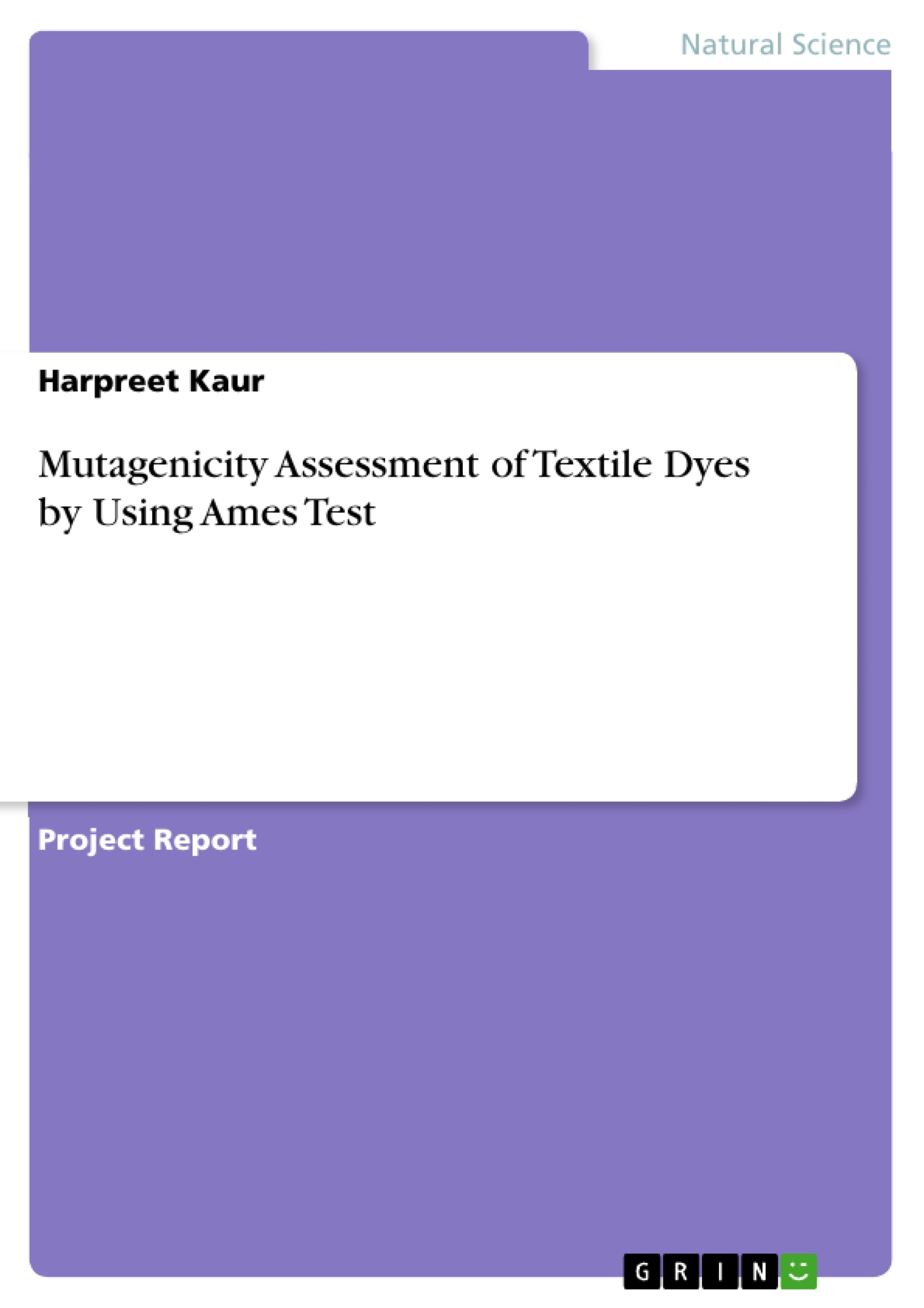Textile dyes were used in colouring the clothes.Textile wastewater includes various types of dyesand chemicals that make the environmental challenge for textile industry. Main pollutants in textile wastewater came from dyes. Textile industry effluent contains these toxic dyes. These toxic compounds enter into the surface water contaminate the surface water and it is used for irrigation and drinking purposes. Also, farmers use water from the rivers for agricultural purposes and the nearby areas peoples of the town, use both the surface and underground water as potable water, it is very harmful and unsafe to discharge this effluent into water body. Here, present work is focused on the characterization of various disperse and vat dyes used by textile industries of Ludhiana for mutagenicity assessment.
Inhaltsverzeichnis (Table of Contents)
- Chapter: 1 Introduction
- CHAPTER: 2 AIM, SCOPE AND OBJECTIVE OF THE WORK
- Objective
- SCOPE OF THE WORK
- CHAPTER: 3 Review of literature
- CHAPTER 4 EQUIPMENTS, MATERIALS AND EXPERIMENTALSETUP
- Equipment’s:
- Materials:
- Experimental Setup:
- Methods:
- Media
- Chapter: 5 AMES TEST
- Chapter:6 Result and discussion
- Data analysis
- Result is positive
- Chapter: 7 Conclusion
- Chapter: 8 REFERENCES
Zielsetzung und Themenschwerpunkte (Objectives and Key Themes)
This research aims to assess the mutagenicity or carcinogenicity of textile dyes to those living near textile mills. The primary goal is to contribute to a greater understanding of the environmental and health risks associated with textile dye production and disposal.
- Mutagenicity assessment of disperse and Vat dyes used in the textile industry
- The Ames test as a method for detecting potential carcinogens
- The environmental impact of textile dye pollution on water sources and human health
- The importance of responsible textile dye production and waste management practices
- The potential use of microorganisms in the degradation of toxic dyes
Zusammenfassung der Kapitel (Chapter Summaries)
- Chapter 1: Introduction This chapter introduces the concept of environmental pollution, focusing on the contamination caused by textile industries. It discusses various types of pollution, including air, light, noise, soil, and water pollution, emphasizing the role of textile dyes in water pollution. The chapter provides a detailed overview of different types of dyes, including disperse dyes, and their associated environmental hazards.
- Chapter 2: Aim, Scope and Objective of the Work This chapter defines the research aims and objectives, focusing on the assessment of the mutagenicity of disperse and Vat dyes used in textile mills in Ludhiana. It outlines the scope of the work, which includes surveying textile mills for dye usage and conducting mutagenicity assessments using the Ames test.
- Chapter 3: Review of literature This chapter reviews the literature on the mutagenicity assessment of chemicals, highlighting the use of microorganisms like Escherichia coli in toxicity screening. It discusses the development and applications of the Ames test, a widely used method for detecting mutagens and potential carcinogens.
- Chapter 4: Equipments, Materials and Experimental Setup This chapter details the equipment, materials, and experimental setup used in the research. It describes the selection of textile dyes for the study and the specific methods employed for preparing the media and conducting the Ames test.
- Chapter 5: Ames Test This chapter provides a comprehensive overview of the Ames test, a widely used biological assay for assessing the mutagenicity of chemicals. It outlines the experimental procedure, including the steps involved in preparing the cultures, media, and dilutions of the dyes. It also explains the rationale behind using tryptophan-dependent Escherichia coli strains in this test.
- Chapter 6: Result and discussion This chapter presents the results of the Ames test, demonstrating the mutagenicity of various disperse and Vat dyes at different concentrations. The chapter analyzes the data and provides interpretations, highlighting the potential carcinogenic effects of textile dyes. It underscores the need for further research and preventative measures to mitigate these risks.
Schlüsselwörter (Keywords)
The main keywords of this research include mutagenicity, carcinogenicity, textile dyes, disperse dyes, Vat dyes, Ames test, Escherichia coli, environmental pollution, water pollution, human health, and biodegradation. The research explores the environmental and health risks associated with textile dye production and disposal, focusing on the potential for these dyes to cause mutations and cancer.
- Quote paper
- Harpreet Kaur (Author), 2017, Mutagenicity Assessment of Textile Dyes by Using Ames Test, Munich, GRIN Verlag, https://www.grin.com/document/1060196



